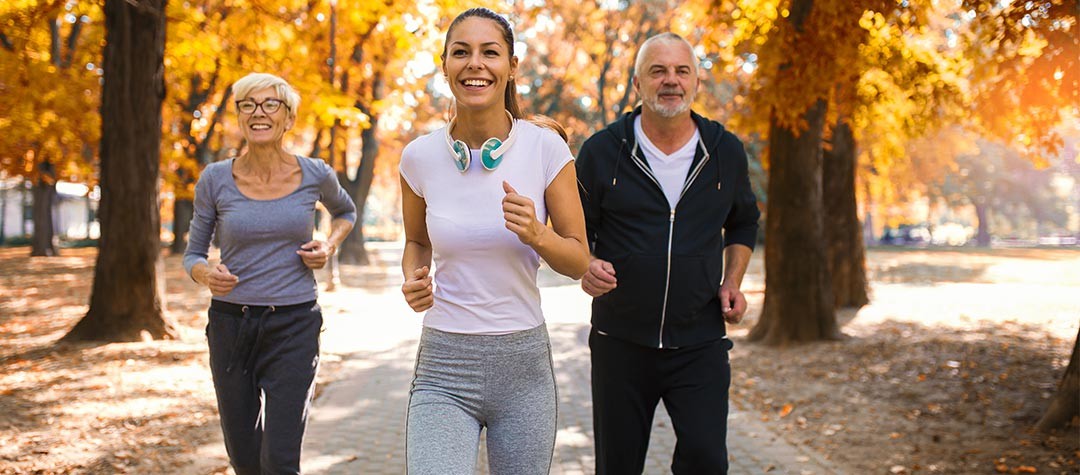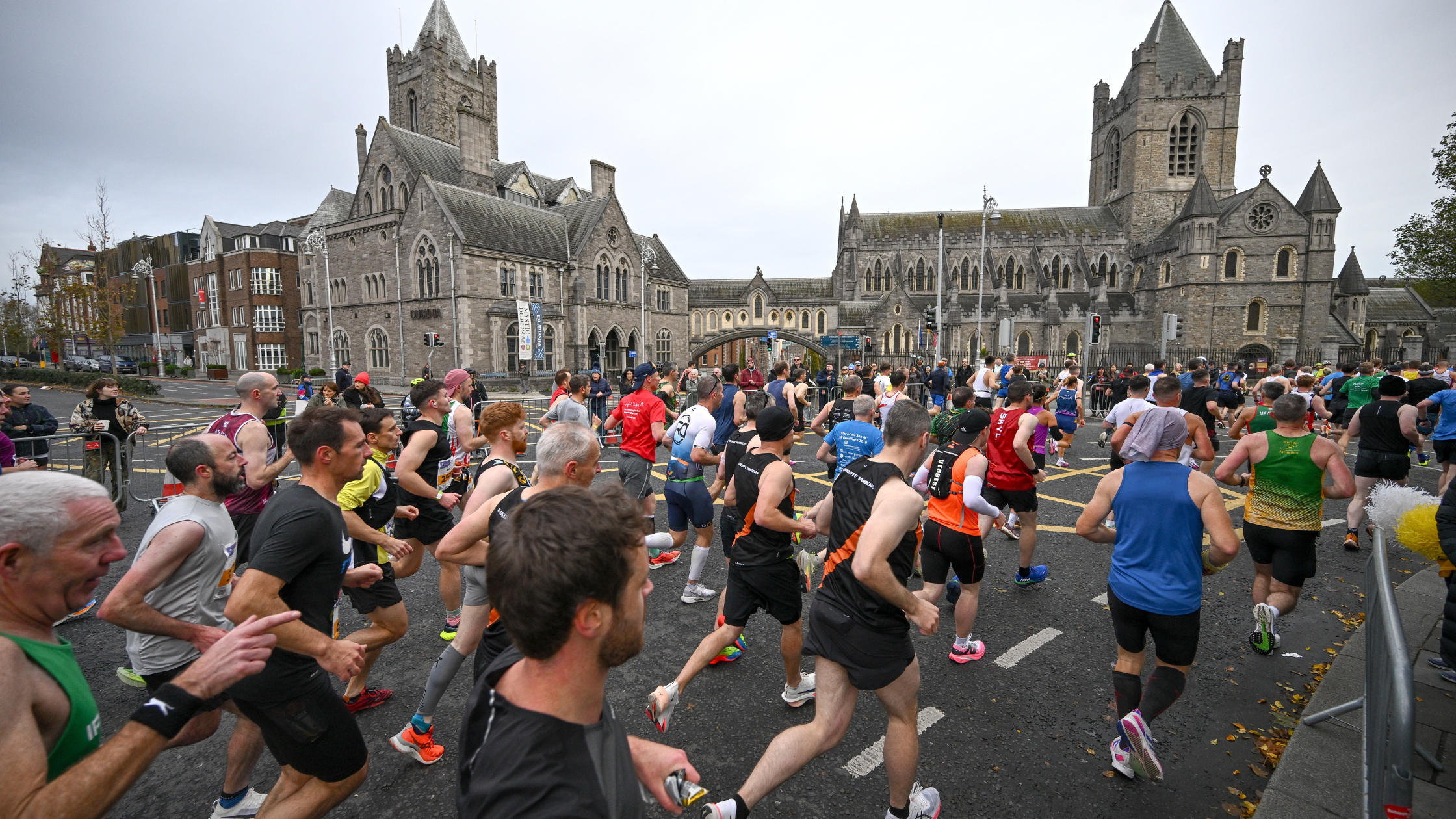The beauty of running is that it’s ‘ageless’ and can be a lifelong sport. However, it’s no secret that our bodies change as we age. Check out our top tips to help you adapt your training and your lifestyle as you get older and run through your decades.
Running in your teens
As a growing teenager, now is the time to form some good nutritional habits that will help to keep your performance and your health on track throughout your running life. It’s crucial to fuel adequately and to meet the energy demands of your training, (particularly as you are still growing) by eating a balanced diet containing carbohydrate, protein and fat.
It’s also really important to remember that up to 90 per cent of peak bone mass is acquired by age 18 in girls and age 20 in boys, making it vital to ensure that you are eating enough protein and bone boosting vitamins and minerals such as calcium, magnesium, phosphorous and vitamin D.
As a young, whippet-like runner it can be tempting to train more and more. However, if you want to enjoy longevity as a runner then it’s important to avoid early specialisation and doing too much, too soon. Combining other sports and activities with running as a teenager can help you to become a better all-round athlete and can help to reduce the likelihood of overuse injuries and burnout.
Your teenage years are the best time to try and work on your running form and to address any biomechanical or technical weaknesses that you may have as you’re likely to find picking up movement patterns easier at this age.
Running in your 20s
Arguably your 20s are when you reach your peak physiologically. You are now fully grown and the hormones responsible for strength, speed and recovery are at their highest. As a result this decade is a good time to maximise your speed at the shorter distances such as 5k.
This decade is a good time to maximise your speed at the shorter distances
However, whilst working on your speed is key, it’s also a really important not to neglect the longer, endurance work. Your 20s are a really good time to start building a good aerobic base through longer runs and overall mileage that will give you a solid foundation on which to layer your speed work.
Running in your 30s
As you enter your 30s you may need to become a little smarter with your training and accept that you may no longer be able to include the same volume of intensity in your training as you used to. As muscles age, the number and size of the individual muscle fibres decreases. This means that the body takes longer to recover between harder efforts.
Try to listen to what your body is telling you and don’t be afraid to adapt your training when necessary. If you are feeling tired or have a niggle then schedule some extra easy days before your next hard workout.
In your 30s your focus should be on quality not quantity and finding how to get the most ‘bang for your buck’ from training. You may find that it is beneficial to reduce your overall mileage to ensure that you are recovering optimally between your harder workouts and races. Focusing on the quality of your training rather than the quantity should also help you to achieve a healthy balance with the other commitments in your life.
Running in your 40s
For the vast majority of people, flexibility is at a premium in their 40s! As you age the elasticity of your soft tissues decreases and joint motion becomes more restricted, meaning your flexibility is reduced. This can be further impacted if you have a sedentary job and spend most of your day sitting behind a desk.
Try to include some dynamic flexibility work such as lunges and leg swings before each run to help increase your range of motion. After each run spending just a few minutes stretching the major muscle groups can really help to gently lengthen the muscles, ligaments and tendons again, keeping you on the road and injury free.
Once into your 40s muscle mass starts to decline. Adding some strength training to your programme can make a big difference in helping to preserve muscle mass.
Running in your 50s
Many runners find that as they enter their 50s the high impact nature of running can be unforgiving and persistent injuries and niggles start to creep in. Your tendons become stiffer and therefore less able to tolerate stress.
However cross training can be the older runner’s saviour. Low impact activities such as cycling, swimming and aqua jogging make a great alternative to running and can reduce your risk of sustaining an overuse injury, strengthen alternative muscle groups that are not predominantly used when running, whilst also improving your aerobic fitness.
Cross training can be the older runner’s saviour
For the majority of women their early 50s is when the menopause occurs, resulting in a huge reduction in the hormone oestrogen. This can have a big impact on your bone density so it’s important to try and keep up some strength based gym work to help offset this.
Running through the menopause can be difficult with disrupted sleep, hot flushes, mood swings and energy crashes but the best thing that you can do is to listen to your body. Don’t be afraid to schedule in some additional rest and recovery days if you feel that you need them.
Running in your 60s
Your 60s is typically where every runner’s enemy, osteoarthritis, rears its ugly head. If your joints are a little creaky then don’t be afraid to start each run with a walk and then gradually increase your speed, giving your body a little time to warm up. Including a little more off-road running in your programme tends to reduce the level of impact slightly and is therefore kinder on your joints.
At this point in your life your metabolism will have slowed and your ability to process nutrients also declines with age. Therefore it’s important to try to eat a diet that includes plenty of fresh fruit and vegetables and limit refined and processed foods that contain ‘empty’ calories.
Running in your 70s and beyond
If you are able to run into your 70s and beyond then that is truly wonderful! Including some gentle yoga alongside your running can be a great way to offset any further reductions in mobility and strength that are associated with this period of life.
Linking up with a running partner or group can be a great way to meet new people socially and is also safer in case of any trips or falls. Finally, and most importantly, ignore anybody who tells you that you’re too old!














